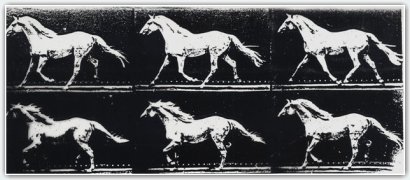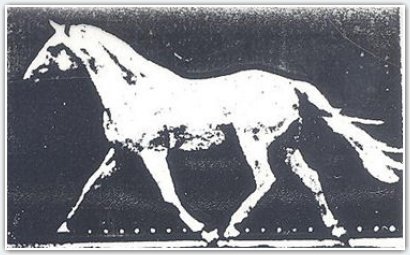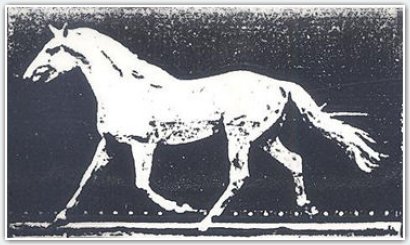Uneducated and irresponsible techniques
Uneducated and Irresponsible Techniques
Placing the legs without adequate orchestration of the vertebral column mechanism is not a therapy. It is at the contrary the best way to cripple a horse. Here is a short segment of the ITHC third installment who explains one angle of the problem.
A horse engaging the hind legs without using the vertebral column properly will further the forward rotation of the femur around the hip joint. While rotating around the hip joint, the femur undergoes simultaneously an inward rotation around the tibia. This rotary movement of the femur occurs toward the outside, (medial-to-lateral,) during the swing phase and toward the inside, (lateral-to-medial,) during the support phase.
As the protracting hind leg swings forward, the stifle extends and the usual medial-to-lateral rotation occurs. “If the extension is carried on beyond about 143-145°, there is a final lateral-to-medial twist, which rotates the patella medially and hooks the medial patellar ligament over the medial ridge of the femoral trochlea. The stifle is “locked” and flexion prevented.” (James R, Rooney, Biomechanics of lameness in horses, 1968) This is the mechanism of accidental locking of the patella. To unlock the stifle, the quadriceps muscle contracts, lifting the patella as the biceps contracts, pulling the patella laterally. The horse’s quick reflex contractions prevent accidental locking of the patella but induce stride after stride of abnormal stresses on the joint.
At the canter, both hind legs swing forward simultaneously. The canter is therefore a gait where the pelvic and sacrum rotate dorso-ventrally around the lumbosacral articulation. At the trot as well as at the walk, one hind limb swing forward, whiles the other moves backward. There is consequently very little dorso-ventral movement of the pelvic. Pelvic movements combine in fact dorso-ventral rotation, transversal rotation and lateral bending. One needs to understand that these movements are not created by the pelvic turning around the sacrum. There is no movement between the pelvic and the sacrum. There is no transversal rotation between the sacrum and the lumbar vertebrae. Pelvic movements are therefore the outcome of thoracolumbar column movements and when abnormality occurs at the level of the pelvic, it cannot be treated manipulating the pelvic but instead correcting the vertebral column mechanism by working on the epaxial spinal muscles. 
Muybridge needs to be read from right to left, first and second line.
Upper line, first picture starting to the right.
On the first picture of the upper line, the pelvic is about like that. Slight dorso ventral rotation. The transversal rotation is slightly to the right because the left hind limb is moving into the swing phase and therefore the right hip join is slightly higher than the left one. There is also a slight lateral movement helping the forward movement of thleft hind leg as well as backward movement of the right hind limb.
Upper line middle picture.
At this sequence of the trot stride, the pelvic increases slightly its dorso-ventral rotation easing the forward movement of the hind limb. The hind leg engagement is made possible by the combined action between the rotation of the femur around the hip joint and the dorso-ventral rotation of the pelvic. The dorso-ventral rotation of the pelvic is completed by a transversal rotation to the left. The combination of the two movements might be completed by a very slight increase of the pelvic lateral movement. In fact, the greater the horse cordinates longitudinal flexion and transversal rotation of the thoracolumbar spine, the lesser the horse needs lateral movements of the pelvis and the more efficient became forward movement and balance control.
Upper line left picture. 
This is the sequence of the stride where the stifle reaches full extension.
Accidental lock of the patella occurs when the stifle extends to an angle of 145°. Normal hind legs’ kinematics involve a combined action between the rotation of the femur around the hip joint and dorso-ventral rotation of the pelvic. If the dorso-ventral rotation is altered by improper training technique, deep engagement of the hind leg can be assumed increasing the rotation of the hind limb around the hip joint creating the problem explained by James Rooney. The comparison of the two picture clearly show that the horse working long and low engages the hind leg as far as the restricted motion of the pelvis created by the lowering of the neck permit. In order to reach the same engagement than Muybridge horse’s hind leg, the horse working long a low would have to increase the rotation of the hind limb around the hip join exposing himself to stifle injury.
If the dorso-ventral rotation is altered by improper training technique, deep engagement of the hind leg can be assumed increasing the rotation of the hind limb around the hip joint creating the problem explained by James Rooney. The comparison of the two picture clearly show that the horse working long and low engages the hind leg as far as the restricted motion of the pelvis created by the lowering of the neck permit. In order to reach the same engagement than Muybridge horse’s hind leg, the horse working long a low would have to increase the rotation of the hind limb around the hip join exposing himself to stifle injury.
In many instances, the horse adaptation to imbalance on the forehand is interpreted as laziness or other behavior problem. The misinterpretation ended forcing the horse into physical situation creating injuries. As well, training techniques acting on the hind or front legs without adequate vertebral column mechanism are uneducated and irresponsable techniques exposing the horse to injuries. Jean Luc Cornillle


